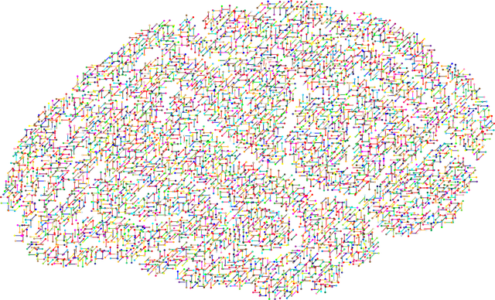AI Portal SUPACE
Context
Recently, the Chief Justice of India (CJI) launched an Artificial Intelligence (AI) based portal ‘SUPACE’ in the judicial system aimed at assisting judges with legal research.
- SUPACE is short for Supreme Court Portal for Assistance in Court’s Efficiency.
- Earlier, the E-Courts Project was conceptualized on the basis of “National Policy and Action Plan for Implementation of Information and Communication Technology (ICT) in the Indian Judiciary – 2005” submitted by the e-Committee of the Supreme Court.
Key Points
About SUPACE:
- It is a tool that collects relevant facts and laws and makes them available to a judge.
- It is not designed to take decisions, but only to process facts and to make them available to judges looking for an input for a decision.
- Initially, it will be used on an experimental basis by the judges of Bombay and Delhi High Courts who deal with criminal matters.
- SUPACEis short for Supreme Court Portal for Assistance in Court’s Efficiency.
- It is a tool that collects relevant facts and laws and makes them available to a judge.
- It is not designed to take decisions, but only to process facts and to make them available to judges looking for an input for a decision.
- Initially, it will be used on an experimental basis by the judges of Bombay and Delhi High Courts who deal with criminal matters.
- It is designed to make research easier for judges, thereby easing their workload.
- It is unique and is a perfect blend of human intelligence and machine learning.
Significance:
- It will produce results customized to the need of the case and the way the judge thinks.
- This will be time saving. It will help the judiciary and the court in reducing delays and pendency of cases.
- AI will present a more streamlined, cost effective and time bound means to the fundamental right of access to justice.
- It will make the service delivery mechanism transparent and cost-efficient.
Challenge:
- Redundancy of certain posts after introduction of SUPACE.
- Since it is intended to do what the human mind can do, but much more efficiently and methodically, there is apprehension in the generation of unemployment.
Other initiatives
- In 2020, the Supreme Court developed a software called, SCI-Interact, to make all its 17 benches paperless. This software helps judges access files, annexures to petitions and make snotes on computers.
- Earlier, the Department of Legal Affairs (DoLA), Ministry Of Law And Justice, has introduced a web-based application called LIMBS or Legal Information Management & Briefing System. The application can monitor cases from high courts and tribunals uploaded by the concerned Commissionerates. The idea is to track the entire life cycle of a case efficiently.
- In November 2019, the Apex Court launched an indigenously engineered neural translation tool, SUVAAS, to translate judicial orders and rulings from English to vernacular languages faster and efficiently.
- The E-Courts Project was conceptualized on the basis of “National Policy and Action Plan for Implementation of Information and Communication Technology (ICT) in the Indian Judiciary – 2005” submitted by the e-Committee of the Supreme Court.
E-Courts Project
About:
- It was conceptualized with a vision to transform the Indian Judiciary by ICT (Information and Communication Technology) enablement of Courts.
- It is a pan-India Project, monitored and funded by the Department of Justice, Ministry of Law and Justice, for the District Courts across the country.
Objectives of the Project:
- To provide efficient & time-bound citizen-centric services delivery.
- To develop, install & implement decision support systems in courts.
- To automate the processes to provide transparency and accessibility of information to its stakeholders.
- To enhance judicial productivity, both qualitatively & quantitatively, to make the justice delivery system affordable, accessible, cost-effective, predictable, reliable and transparent.
Conclusion:
For now, in India, SUPACE will be used for administrative purposes and not decision making. “While such attempts in many states shall keep taking place, just like AI can never be an artist, the ability to be fair needs to be evaluated alongside AI technical realities. Automated fairness is not possible to be achieved because ML-based systems do not know how to explain or digest the information they learn, and so a mere idealistic approach to estimate things would not take the initiative further
Global counterparts
The most popular and widely used risk assessment tools used in the US justice system are Correctional Offender Management Profiling for Alternative Sanctions (COMPAS) and Public Safety Assessment (PSA).
- COMPAS: This tool uses many datasets to predict an offender’s rate of recidivism, risk of violent recidivism, and failure to appear in court. COMPAS breaks it down into static factors including past arrests and dynamic factors including substance abuse, employment history and pessimism. The tool analyses the data to come up with a score. COMPAS does not include any opinions or ambiguous data.
- PSA: This tool makes its decisions on nine risk factors such as current arrest, current violent offence, pending charge at the time of the offence, a prior misdemeanour conviction etc. It then weighs each factor and creates a score for individuals. This score predicts the likelihood of a repeat offence.
Unsurprisingly, China has also been adopting AI in the judiciary. The country reportedly has more than 100 robots in courts to recover case histories.
Source: Indian Express



